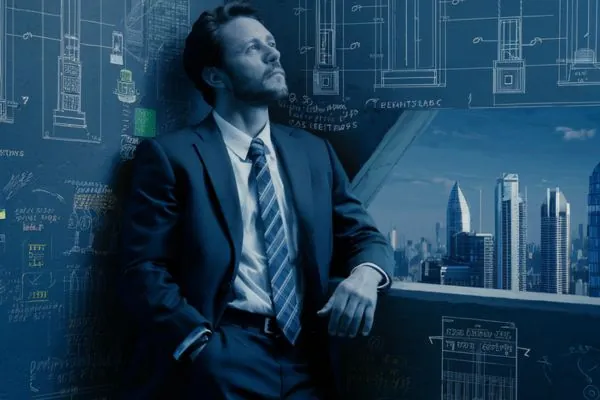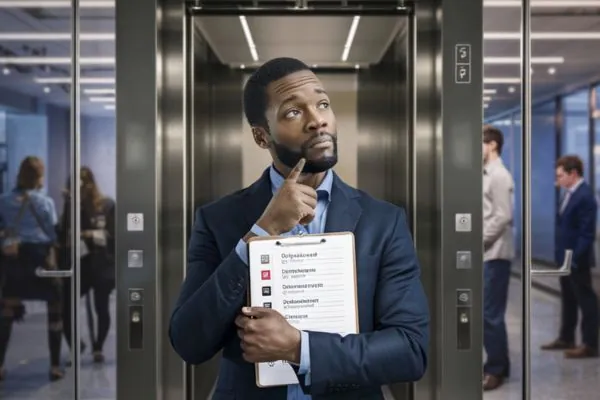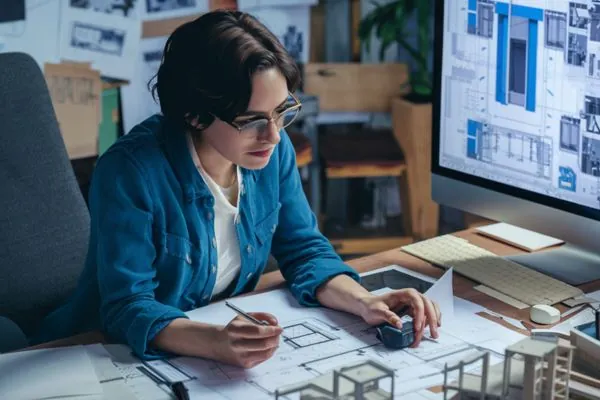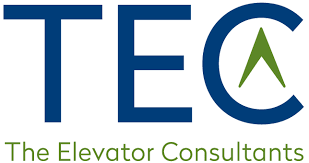Installing Proprietary vs. Non-Proprietary? Building professionals are faced with answering this question when modernizing an elevator just like developers and architects encounter when building a new building. The debate between proprietary and non-proprietary elevator systems is as pivotal as it is complex.
For building owners, property managers, and developers facing new construction or modernization projects, understanding the distinctions and implications of each choice is crucial. There are several factors all parties need to evaluate what is best for the building operations, usage, and budget.
UNDERSTANDING PROPRIETARY ELEVATOR SYSTEMS
Proprietary elevator systems are designed such that all parts, software, and repair tools are exclusive to the original equipment manufacturer (OEM). This exclusivity means that only certified technicians from the OEM with specific access to the proprietary tools and components can perform maintenance or repairs. The allure of proprietary systems often lies in the cost, technology, and installation processes promised by the elevator OEM.

THE APPEAL OF NON-PROPRIETARY ELEVATOR SYSTEMS
On the flip side, non-proprietary elevator systems are characterized by their openness. Components and software from non-proprietary systems can be serviced, repaired, or replaced by a wide range of technicians, not just those affiliated with the OEM. This universality is highly appealing for several reasons:

- Cost-Effectiveness: Competitive pricing for parts and services can significantly reduce maintenance and repair costs over the elevator’s lifespan. It is however common at times for an OEM to offer a significant savings in installing a proprietary system to capture the years of ongoing maintenance and repairs to come for many years. It is common for developers and architects to install the most cost-effective solution. This becomes a problem after the elevator is turned over to building facilities team. The building operations team is than left with an extremely complex situation including outstanding maintenance cost. This is where elevator consulting services are extremely helpful to address all the intricacies including short term and long-term cost.
- Service Flexibility: Building owners have the freedom to choose from a larger pool of service providers, allowing for more competitive bids and services that can be tailored to specific needs. This is key to address upfront as the building really needs to understand the commitment they are making to the OEM when installing a proprietary system, it can be a 10-to-15-year commitment. It is unknown when a system may become non-proprietary.
- Accessibility of Parts: Non-proprietary systems often use parts that are widely available, ensuring that replacements and repairs can be carried out promptly, minimizing downtime. An OEM of a proprietary system controls the parts market including the longevity or life of the parts. It is completely up to the OEM if the parts become proprietary.
DECIDING FACTORS FOR NEW CONSTRUCTION
When embarking on a new construction project, the choice between proprietary and non-proprietary elevator systems hinges on several factors:

- Long-term Maintenance Costs vs. Initial Investment: While proprietary systems may offer some benefits and its imperative consider whether the potential higher costs of long-term maintenance align with your budget and operational goals. Architects and developers must work with the team that will be responsible for managing the ongoing preventative maintenance service contract. An elevator consulting firm can go into an depth analysis with all the necessary parties to understand the true cost of ownership.
- Technology and Performance Needs: Assess the technological and performance requirements of your building. Proprietary systems might offer specialized solutions that are intriguing the building. AN elevator consultant can develop the pros and cons based on the building operations.
- Future Flexibility: Think about the long-term implications of being tied to a single provider. Non-proprietary systems offer greater flexibility in maintenance and service choices. This is one of the major factors to consider. In today’s times it is extremely common for an OEM to dictate the future of a proprietary systems many different components.
CONSIDERATIONS FOR MODERNIZATION PROJECTS
Modernizing an existing elevator system presents a unique set of considerations:
- Compatibility: Evaluate whether upgrading to a proprietary system offers compatibility benefits that significantly outweigh the open nature of non-proprietary alternatives. It is common for an OEM to repair components of an elevator with proprietary components in ensure service. It is important for buildings to understand that an entire elevator modernization does not need to take place for an OEM to install proprietary equipment. It is important that buildings know what is being installed at all times. An elevator consultant will be able to address this OEM elevator service provider strategy.
- Cost-Benefit Analysis: Modernization is an opportunity to rethink operational costs. A non-proprietary system could offer savings that reinvest in other aspects of building management. An OEM may offer a discount in installation to get their proprietary equipment installed.
- Upgrading vs. Overhauling: Determine whether the modernization project is a full overhaul or a series of upgrades. Non-proprietary systems may offer more flexibility for incremental improvements. This allows the building to save cost and protect themselves from unnecessary cost.
MAKING THE INFORMED CHOICE
The decision between proprietary and non-proprietary systems is not to be taken lightly. It requires a delicate balance between current needs and future considerations. Here are steps to guide the decision-making process:
- Consult with Experts: Engage with an elevator consultant who have a deep understanding of both proprietary and non-proprietary systems. They know the different needs of buildings specific operational needs. Their unbiased advice can be invaluable.
- Analyze Total Cost of Ownership: Look beyond the initial installation cost and consider the total cost of ownership, which includes maintenance, repairs, and potential upgrades over the elevator’s lifecycle.
- Assess Vendor Reliability: Research the manufacturer’s reliability, support services, and market applications. This is crucial for both proprietary and non-proprietary systems, but especially for the proprietary, given the dependency on a single elevator service provider or OEM.
Overall, choosing between proprietary and non-proprietary elevator systems involves a clear market understanding of each option’s benefits and limitations. For new constructions and modernization projects alike, the key lies in prioritizing long-term operational efficiency, cost management, and the flexibility to adapt to future needs. By carefully considering these factors and seeking expert guidance, building owners can make a decision that aligns with their strategic goals, ensuring a smooth and efficient journey for all who ascend and descend within their walls.
Have a Question About Elevators?
FAQ - About The Topic Title
What is the difference between proprietary and non-proprietary elevator systems?
Proprietary systems are designed so that only the original equipment manufacturer can access, maintain, and repair them due to restricted access to parts, tools, and diagnostic software. Non-proprietary systems, on the other hand, are designed with accessibility in mind, allowing any qualified elevator technician to perform elevator maintenance and repairs using widely available parts and tools.
Why would a building owner choose a proprietary elevator system?
Owners might opt for proprietary systems due to perceived reliability, technology offerings, or cost savings. Original Equipment Manufacturers often promote these systems as offering superior performance and integration capabilities and cost savings.
What are the benefits of non-proprietary elevator systems for building owners?
Non-proprietary systems offer greater flexibility in elevator maintenance and repairs, potentially lower costs over the elevator’s lifespan, and the freedom to choose between multiple elevator service providers, ensuring competitive pricing and service quality.
How do elevator proprietary systems affect the long-term maintenance and modernization costs?
Proprietary systems often come with higher long-term maintenance and lower modernization costs due to the monopoly on parts and services. The lack of competitive pricing can lead to increased expenses over the elevator’s operational life. There is also the trend to obsolete parts as soon as 3 years.
Can proprietary elevator components be replaced with non-proprietary ones during modernization?
This depends on the equipment component and the extent of the modernization. It is common that during a full elevator modernization, it’s possible to replace proprietary components with non-proprietary ones, granting building owners more control over maintenance and repair choices. If only a few components are being replaced it gets more complex. However, this needs to be evaluated on a case-by-case basis with professional elevator consultant consultation.
What should be considered when deciding between proprietary and non-proprietary systems for new constructions?
Consider factors such as the total cost of ownership, flexibility in choosing elevator service providers, compatibility with future upgrades, and the building’s specific needs. Consulting with an independent elevator consultant can provide valuable insights.
Are there any regulatory or compliance differences between proprietary and non-proprietary systems?
Compliance with local safety and building codes is mandatory for both types of elevator systems.
How does the choice between proprietary and non-proprietary systems affect emergency and safety features?
Safety standards apply equally to both systems. However, proprietary systems may use specific technologies for emergency communications and safety features, which could limit servicing options. Ensuring these systems meet or exceed local safety regulations is crucial.
What role do elevator consultants play in helping decide between proprietary and non-proprietary systems?
Elevator consultants can assess your building’s specific needs, forecast potential maintenance and upgrade costs, and provide an unbiased recommendation on which system better suits your project’s short-term and long-term goals and budget.
Can proprietary restrictions be negotiated at the time of purchase or modernization?
Yes, terms regarding proprietary restrictions can often be negotiated before finalizing a new construction or modernization contract. This might include clauses about parts availability, diagnostic tools, and software access, which can provide more flexibility in the future. It is however best to obtain bids up front for both proprietary and non-proprietary elevator systems.
What impact does the choice of elevator system have on a building’s resale value or appeal to potential tenants?
The choice can significantly impact a building’s appeal. Non-proprietary systems may be more attractive to prospective buyers or tenants due to the perceived ease of maintenance and potential cost savings, whereas proprietary systems may appeal for the OEM reputation.
